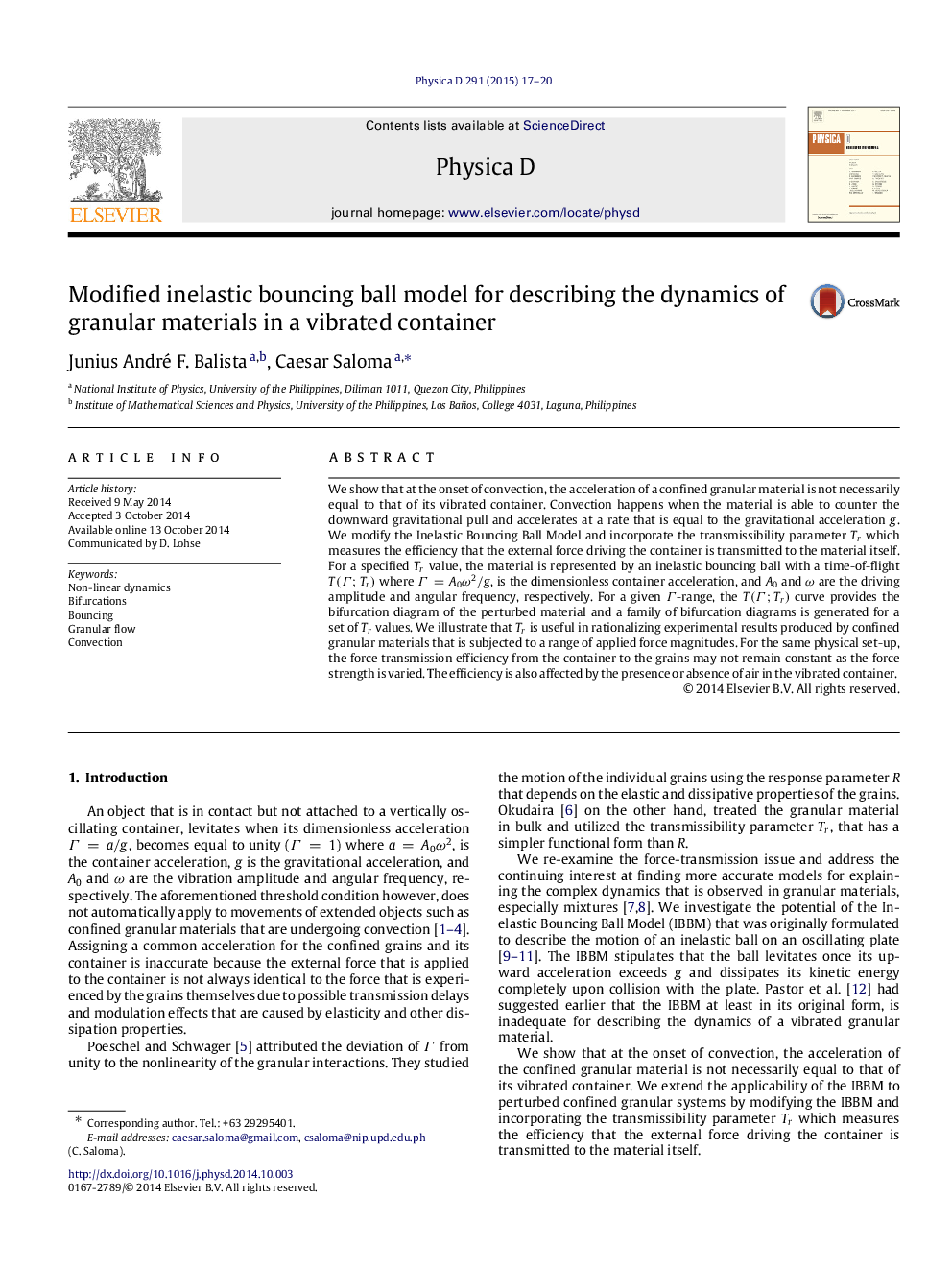| Article ID | Journal | Published Year | Pages | File Type |
|---|---|---|---|---|
| 1898360 | Physica D: Nonlinear Phenomena | 2015 | 4 Pages |
Abstract
We show that at the onset of convection, the acceleration of a confined granular material is not necessarily equal to that of its vibrated container. Convection happens when the material is able to counter the downward gravitational pull and accelerates at a rate that is equal to the gravitational acceleration g. We modify the Inelastic Bouncing Ball Model and incorporate the transmissibility parameter Tr which measures the efficiency that the external force driving the container is transmitted to the material itself. For a specified Tr value, the material is represented by an inelastic bouncing ball with a time-of-flight T(Î;Tr) where Î=A0Ï2/g, is the dimensionless container acceleration, and A0 and Ï are the driving amplitude and angular frequency, respectively. For a given Î-range, the T(Î;Tr) curve provides the bifurcation diagram of the perturbed material and a family of bifurcation diagrams is generated for a set of Tr values. We illustrate that Tr is useful in rationalizing experimental results produced by confined granular materials that is subjected to a range of applied force magnitudes. For the same physical set-up, the force transmission efficiency from the container to the grains may not remain constant as the force strength is varied. The efficiency is also affected by the presence or absence of air in the vibrated container.
Related Topics
Physical Sciences and Engineering
Mathematics
Applied Mathematics
Authors
Junius André F. Balista, Caesar Saloma,
